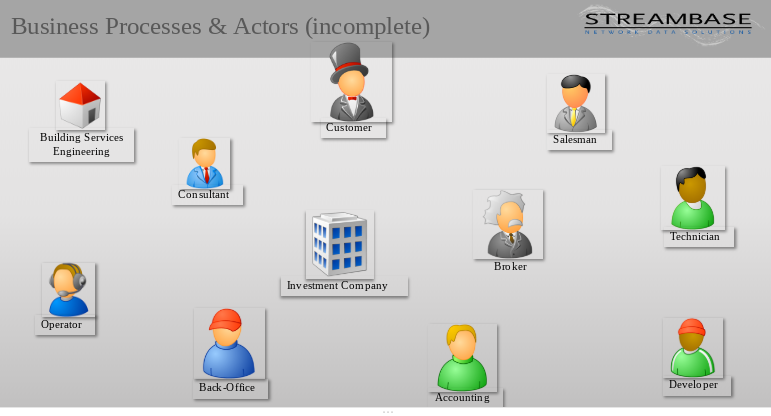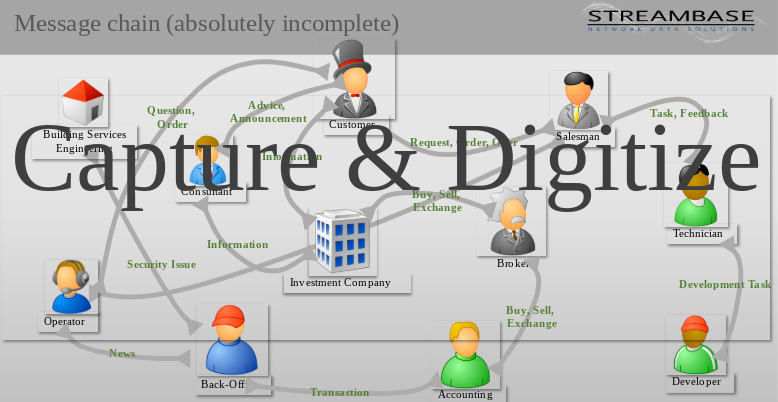Phase 1 – Data modeling
A solid foundation for digital companies: entities
The success of digitization projects largely depends on clean data inventories and meaningful data modeling. These concepts are important for creating the most accurate picture of the company’s reality based on data, which in turn is an essential prerequisite for the subsequent automation, optimization and transformation processes.
Ideally, data modeling should take place in two stages – descriptive and technical modeling.
Descriptive modeling
The purpose of descriptive modeling is to capture the company in its entirety.
Abstract and physical characteristics – such as actors, situations, processes and events – are identified and described as entities (Entity Relationship Model). These are then assigned attributes to classify the individual entities as clearly and unambiguously as possible.

This process is preceded by detailed interviews with the responsible people. The more precision is applied in these conversations, and the more detail goes into the investigation of individual specialist systems, the more precisely the entities will reflect the company’s situation to create a clear picture of existing information and/or interaction streams, what is communicated in which channels, and which message content and information is relevant.
The aim does not have to be immediate perfection. Adjustments can usually be made quickly and easily.

Technical modeling
This is followed by technical data modeling. To this end, the company selects a database management system (e.g. Microsoft SQL Server, an Oracle database system or an open database such as MySQL or MariaDB) Ideally, such a system already exists within the company and can be used directly.
As a prerequisite, the chosen system must be freely programmable, and cannot be tied to a specific software.
The entity collection from the previous step now forms the foundation for creating a completely new database pattern. Each entity represents a table within the newly created corporate database, in which the identified attributes form the individual table columns. This allows for quickly generating new, meaningful and transparent data structures.